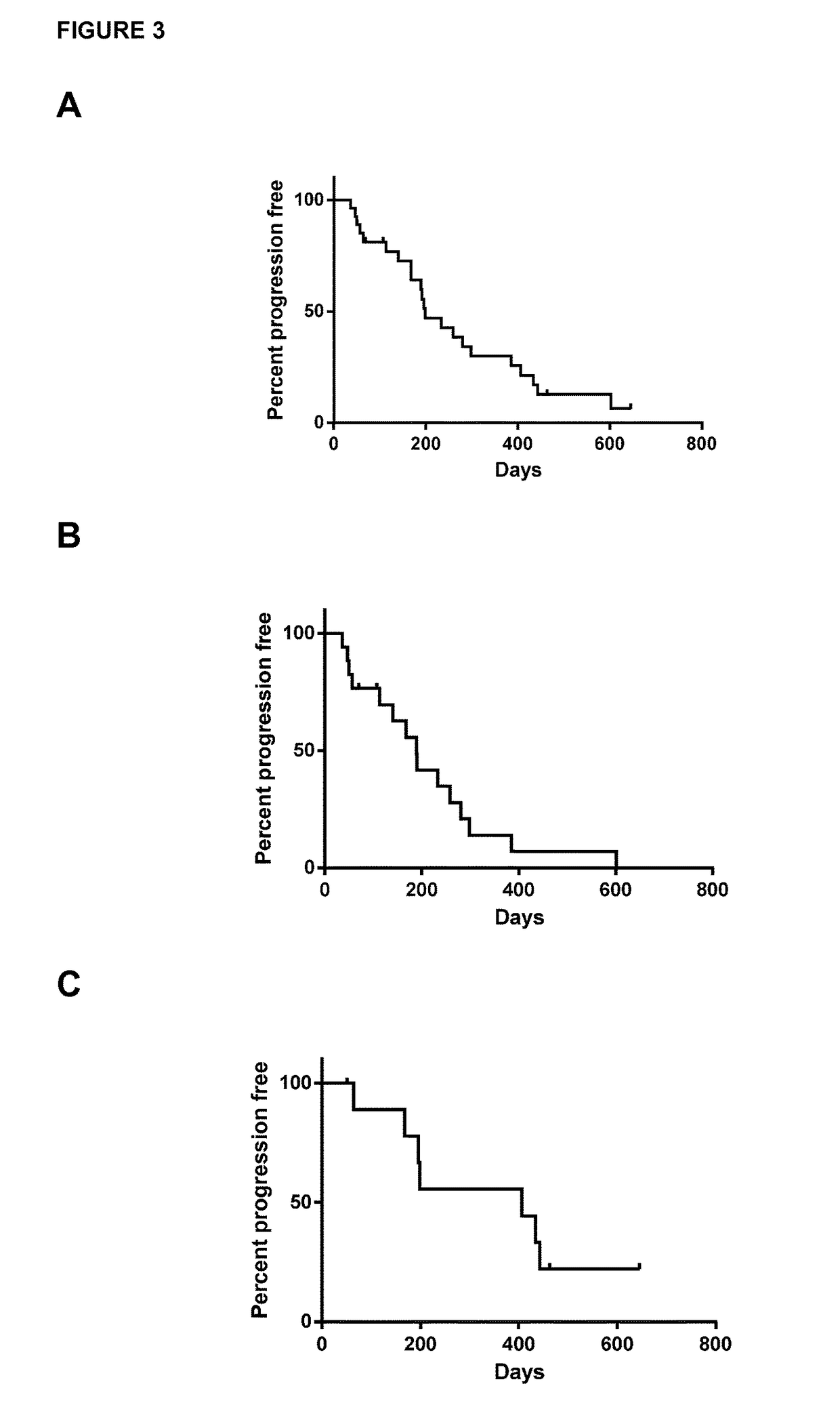Treatment for chronic lymphocytic leukemia (CLL)
- Summary
- Abstract
- Description
- Claims
- Application Information
AI Technical Summary
Benefits of technology
Problems solved by technology
Method used
Image
Examples
example 1
election
[0044]The study is multicenter, open-label, single arm phase I dose escalation study. Patients were eligible to participate in the study if they were >18 years of age, met the diagnostic criteria for CLL or SLL according to IWCLL 2008 guidelines (Hallek et al, Blood (2008) 111, 5446-545), had active disease requiring therapy, and had relapsed or refractory disease following at least one purine analog-containing regimen (or alternate regimen if there was a relative contraindication to purine analog therapy). Patients were required to have adequate kidney and liver function. Platelet count could not be 3 and absolute neutrophil count (ANC) was required to be 1,000 / mm3 if white blood cell count (WBC) was 3. There was no limit for ANC in patients with WBC ≦50,000 / mm3. Patients previously treated with alternate CD19 antibody therapeutics were excluded.
[0045]After providing written informed consent, 27 patients with relapsed or refractory CLL / SLL were enrolled to this Institutiona...
example 2
ign
[0046]Patients were enrolled to this dose escalation study initially in an accelerated manner to limit the number of patients potentially exposed to a sub-therapeutic dose. During the accelerated dose escalation, one patient was enrolled to each cohort and dose escalation could occur after that patient completed cycle 1 if there was no dose limiting toxicity (DLT) or grade 2 treatment-related toxicities. If a DLT or grade 2 toxicity was reached, or beginning at the 3 mg / kg dose level, the dose escalation strategy would revert to standard 3×3 design. In this design, 3 patients are initially enrolled to each cohort, and if 0 patients have a DLT, escalation would occur. If 1 patient experiences a DLT, expansion to 6 patients would occur, and if no patient experiences a DLT, dose escalation would occur. If 2 patients in a cohort experience a DLT, the next lower dose would be expanded and considered as the MTD or recommended phase 2 dose.
[0047]Patients received 9 total infusions of Xm...
example 3
ve Laboratory Studies
[0048]All patients enrolled to this study had stimulated cytogenetics, FISH, and IGHV mutational status performed at baseline as previously described (Byrd et al, J Clin Oncol (2006) 24, 437-43; Woyach et al, Br J Haematol (2010) 148, 754-9. Flow cytometry was performed at baseline and designated time points. After viability assessment, samples were stained using PrepPlus2 automated staining system (Beckman Coulter) using five color whole blood staining technique with panels of directly conjugated monoclonal antibodies. Following 30 minutes of incubation at room temperature in the dark the red cells were lysed using TQ-prep instrument and ImmunoPrep reagent (both from Beckman Coulter) according to manufacturer's recommendations. Samples were analyzed on FC500 flow cytometer (Beckman-Coulter) equipped with CXP software version 2.1 (Beckman Coulter). Multiparametric analysis was performed with gating strategy based on CD45 staining and light side scatter character...
PUM
| Property | Measurement | Unit |
|---|---|---|
| Time | aaaaa | aaaaa |
| Mass | aaaaa | aaaaa |
| Dimensionless property | aaaaa | aaaaa |
Abstract
Description
Claims
Application Information
 Login to View More
Login to View More - R&D Engineer
- R&D Manager
- IP Professional
- Industry Leading Data Capabilities
- Powerful AI technology
- Patent DNA Extraction
Browse by: Latest US Patents, China's latest patents, Technical Efficacy Thesaurus, Application Domain, Technology Topic, Popular Technical Reports.
© 2024 PatSnap. All rights reserved.Legal|Privacy policy|Modern Slavery Act Transparency Statement|Sitemap|About US| Contact US: help@patsnap.com










